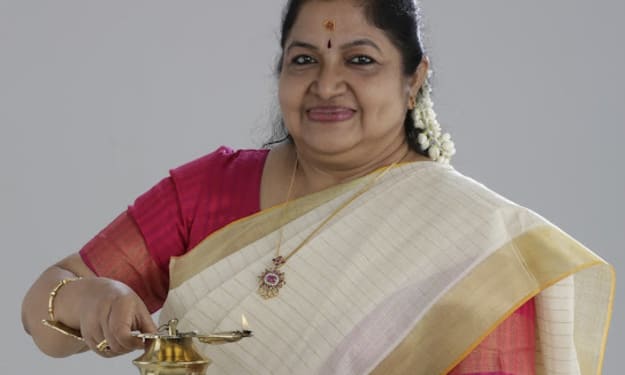Some famous Indian classical music compositions
Some of the timeless compositions to captivate the audience

Indian classical music, with its rich heritage and diverse traditions, has produced countless world-renowned vocalists, musicians, and composers. Let’s explore some of the timeless compositions that continue to captivate audiences:
Raga Yaman: Raga Yaman is one of the most popular and versatile ragas in both Hindustani and Carnatic music. Its melodic structure allows for immense creativity and emotional expression. Many legendary artists have composed beautiful pieces in Raga Yaman.
Raga Bhairavi: Raga Bhairavi is associated with devotion, love, and spirituality. It has inspired numerous compositions, including devotional songs (bhajans) and classical pieces. The late Pandit Bhimsen Joshi’s rendition of “Bhagyada Lakshmi Baramma” in Raga Bhairavi is unforgettable.
Raga Malkauns: Known for its haunting and mysterious quality, Raga Malkauns has been a favorite of composers. Ustad Amir Khan’s rendition of “Ja Ja Re Apne Mandirwa” exemplifies the depth and intensity of this raga.
Raga Todi: Raga Todi is characterized by its solemn and contemplative mood. The composition “Piya Tore Naina Lage Re” by Ustad Rashid Khan is a soul-stirring example of this raga.
Raga Darbari Kanada: Raga Darbari Kanada evokes a regal and majestic atmosphere. The composition “Mero Allah Meherban” by Ustad Bade Ghulam Ali Khan showcases the grandeur of this raga.
Raga Kafi: Raga Kafi is associated with folk melodies and rustic charm. The famous composition “Ka Karoon Sajni” by Pandit Bhimsen Joshi celebrates the essence of this raga.
Thumri and Dadra: Thumri and Dadra are semi-classical forms that blend poetry with music. The compositions of legendary thumri singers like Begum Akhtar and Girija Devi are gems of Indian classical music.
Remember that this is just a glimpse of the vast repertoire of Indian classical music. Each raga and composition carries its unique flavor, emotions, and cultural significance. To explore further, immerse yourself in the melodies and let them transport you to a world of timeless beauty! 🎶🌟
Note: These compositions are celebrated across generations, but there are countless other masterpieces waiting to be discovered. Feel free to explore more and find your personal favorites! 🎵
How can one learn to appreciate different ragas?
Appreciating different ragas in Indian classical music is a delightful journey that allows you to explore the intricate melodies, emotions, and cultural nuances. Here are some steps to enhance your understanding and appreciation:
Listen Actively: Start by actively listening to various ragas. Attend live concerts or explore recordings by renowned artists. Pay attention to the nuances, mood shifts, and unique characteristics of each raga.
Understand the Structure: A typical raga performance consists of two main parts:
- Alap: The slow, free-form improvisation at the beginning. It introduces the raga’s notes and mood.
- Compositions (Bandish): Structured improvisation around compositions with tabla accompaniment.
- Explore both aspects to appreciate the depth of each raga.
Learn Basic Compositions: Start with simple compositions like bandishes or geets associated with specific ragas. These compositions provide a framework for understanding the raga’s melodic patterns.
Analyze Melodic Patterns: Observe how the artist weaves melodic phrases within the raga. Pay attention to the ascending (aarohana) and descending (avarohana) scales. Identify recurring motifs and ornamentations.
Explore Different Ragas: Each raga has a distinct flavor. Explore a variety of ragas, from morning ragas like Bhairav to evening ragas like Yaman. Notice how they evoke different emotions.
Learn from Experts: Seek guidance from experienced musicians or music teachers. They can explain the intricacies of ragas, share anecdotes, and recommend compositions.
Practice Singing or Playing: If you’re a vocalist or instrumentalist, practice playing or singing ragas. Repetition helps internalize the raga’s essence.
Attend Workshops and Lectures: Participate in workshops, lectures, and demonstrations. Interact with experts and fellow enthusiasts. Ask questions and discuss ragas.
Explore Cross-Cultural Connections: Some ragas have counterparts in Western music modes. Compare and appreciate the similarities and differences.
Immerse Yourself: Dive deep into the world of ragas. Read about their historical context, associated myths, and legendary performances.
Remember, appreciating ragas is a lifelong pursuit. Let curiosity guide you, and let the melodies transport you to a realm of timeless beauty! 🎶✨
Note: For a more structured approach, consider exploring compositions in each raga, gradually moving from simple to complex forms






Comments (1)
Good work. So, you are becoming a music reviewer too in a way. This article was interesting to read.